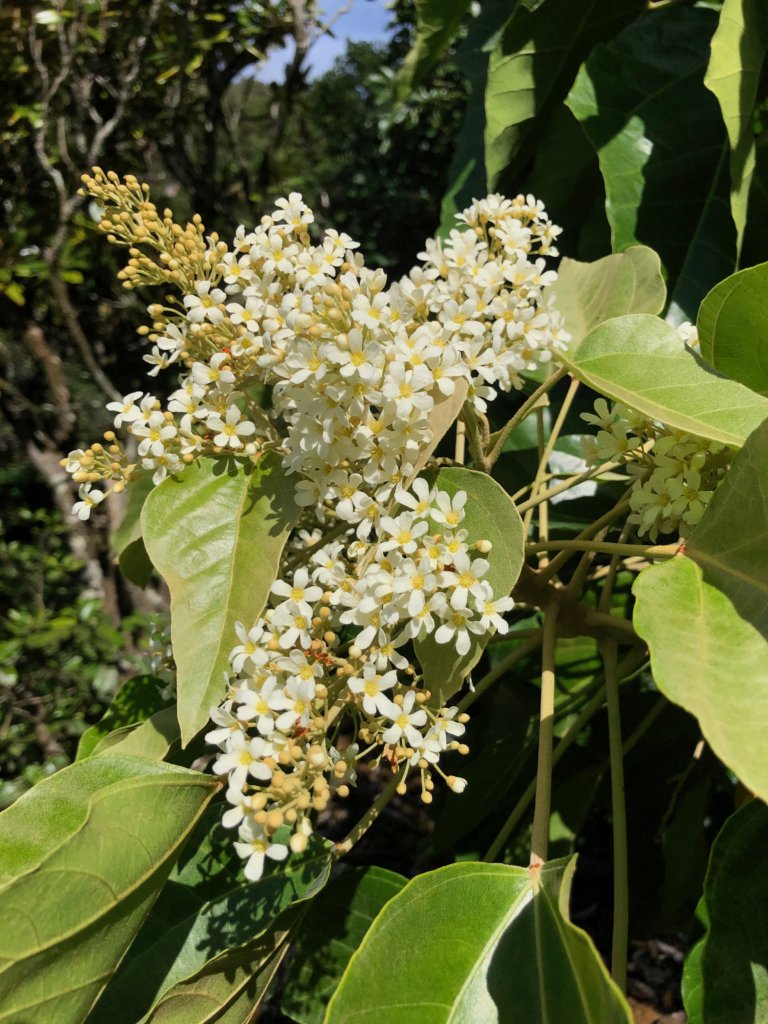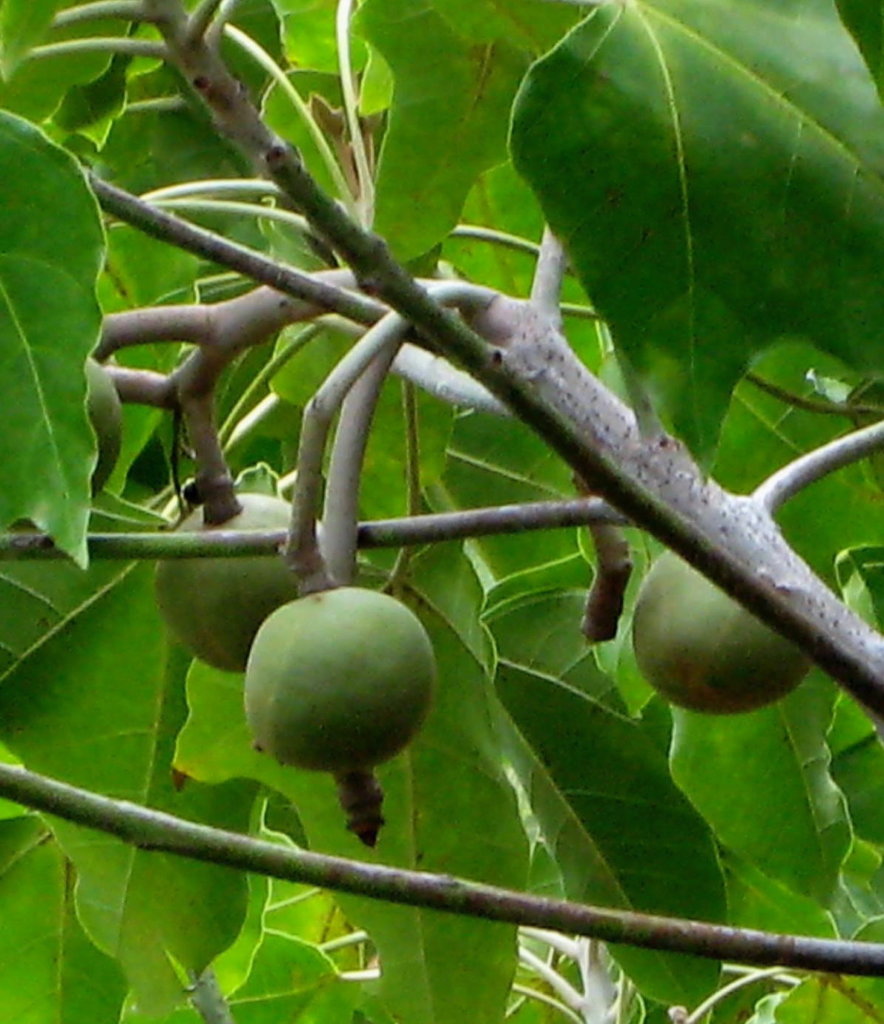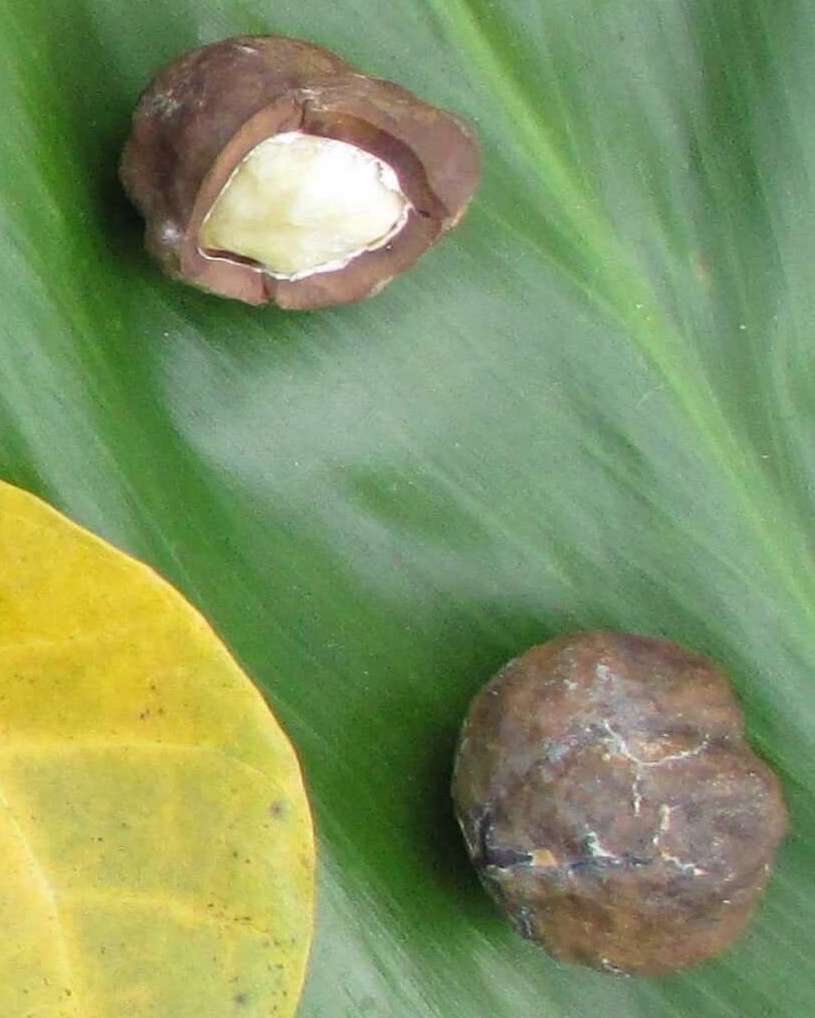Kukui (Candlenut)



Aleurites moluccana
Polynesian Introduction
The state tree, kukui is a symbol of learning, protection, and peace. Its nut has many uses—for lamp oil, as well as for lei. Cooked nut meat is used as a relish (ʻinamona). Kukui relates to “lamp,” “light,” or “torch” in Hawaiian. The nuts of the kukui are 80% oil and were an important source of lighting fuel in traditional times, leading to the treeʻs common name, “candlenut tree.” It is also used for medicine (laxative) and dyes.
Kukui are large trees common throughout Hawaiʻi, found in forests of the lower mountain zone, where they can be identified from a distance by their pale foliage (underside of leaves reflects light). Large crops of fruits are produced each year, 75-100 pounds of nuts from a single tree. The oily kernels were dried, strung together on midribs of coconut leaves, and used as candles. Hawaiians also burned the oil in stone lamps. The outside covering of the nuts yields a black dye. The nuts can also be made into lei, jet black when ripe, white when immature, which take a high polish. After being baked, crushed, and mixed with salt, squid ink, and chili peppers, the nut kernels are eaten as a relish (ʻinamona) as previously mentioned.
The bark, flowers, and nuts are all used for medicine and the rich uncooked nuts are a drastic purge (for constipation). The inner bark provides a red-brown dye for kapa cloth, while the gum from the bark strengthens the kapa. The soot of burned nuts provides a black dye for tattooing and for painting designs on canoes and kapa. The oil cake is a good fertilizer. Hawaiians made canoes of the soft, light-colored wood of tree trunks.
The kukui tree was made the official tree emblem for the state of Hawaiʻi because of the “multiplicity of its uses to the ancient Hawaiians for light, fuel, medicine, dye, and ornaments, as well as the distinctive beauty of its light-green foliage which embellishes many of the slopes of our beloved mountains.
Symbolism
The tree is a symbol of enlightenment, protection, and peace. Kukui has great spiritual significance. Kukui is considered to be the kino lau (bodily form) of Kamapuaʻa, the pig god. The altar of Lono included a wooden carving shaped like a pigʻs head. Some people say that the kukui leaf resembles the pig with its snout and ears. Kukui is also associated with Lono the god of rain, peace, and prosperity. Hawaiians expressed their reverence for Lono by placing carved logs that resemble a hogʻs head on the altars at the boundaries of the ahupuaʻa where harvest offerings were presented.
Moʻolelo
Makaliʻi, famed fisherman, god of plenty, and chief navigator of Hawaiʻi-Loa was an expert in star lore. His name means “eyes of the chief.” One day, his brother was swallowed by a shark. Makaliʻi desperately looked into the water to see where the shark had gone, but the sea was so choppy he was unable to see. Makaliʻi immediately grabbed some nearby kukui nuts, chewed them up, and spat the chewed oily meat on the water. The water became calm and clear so he could see. He then dove in to rescue his brother.